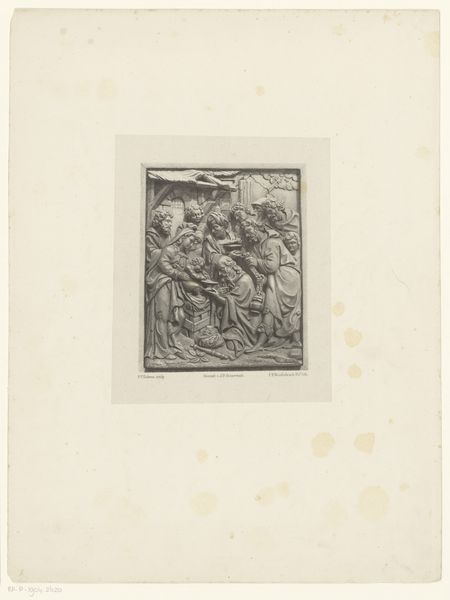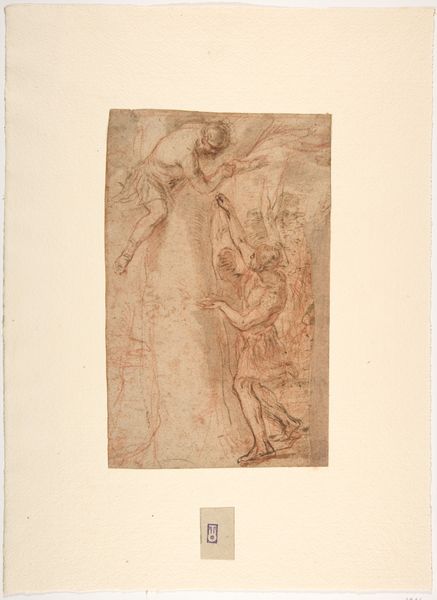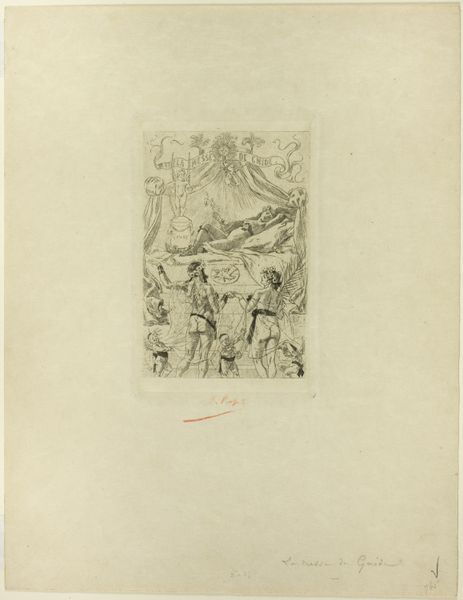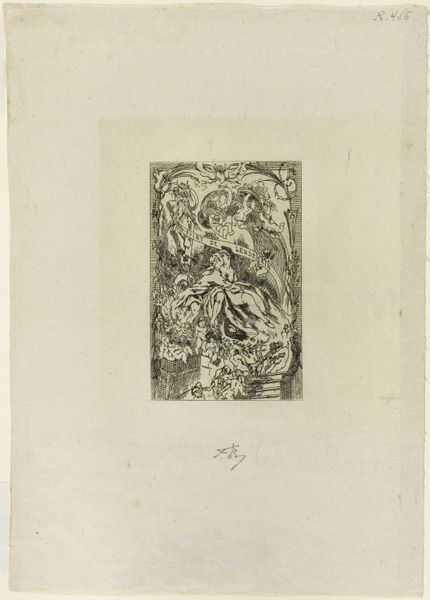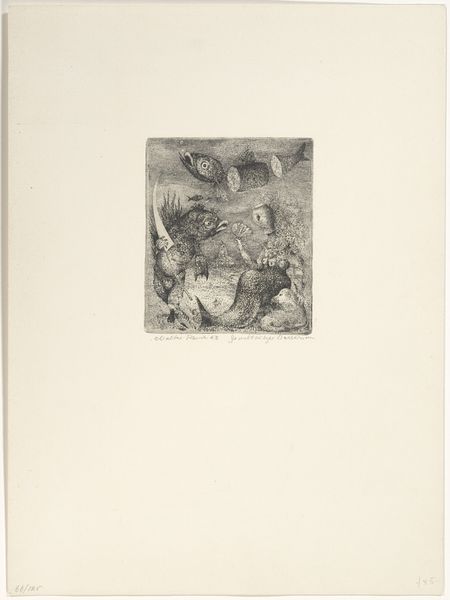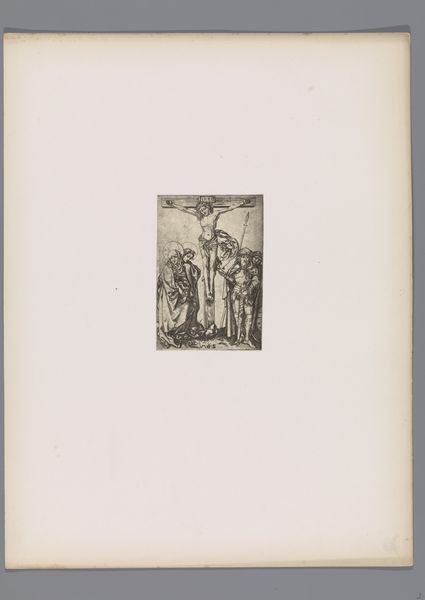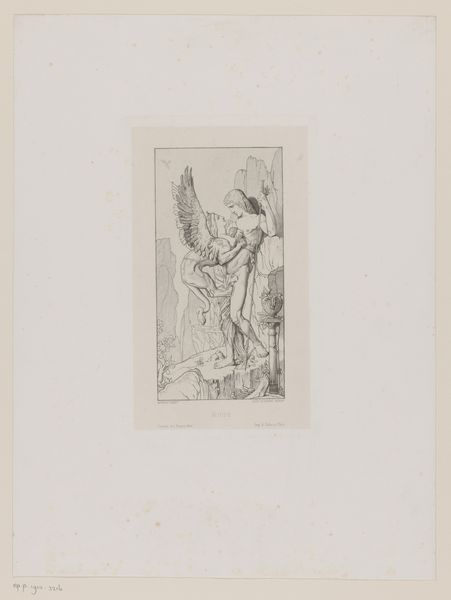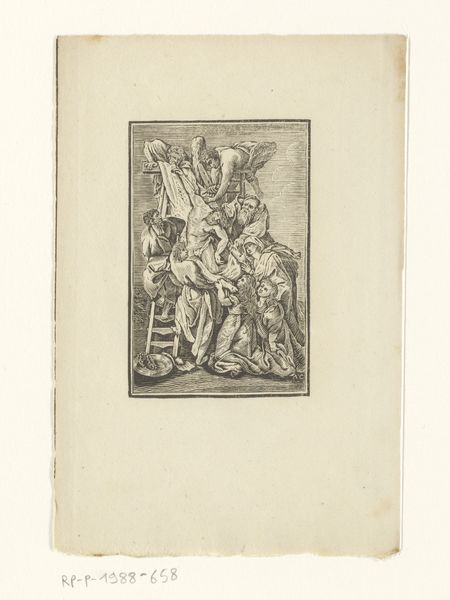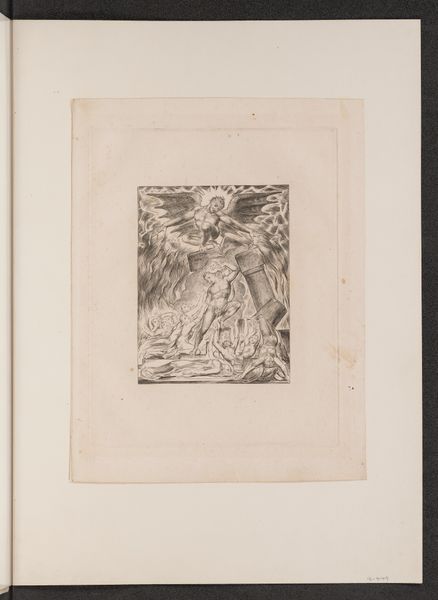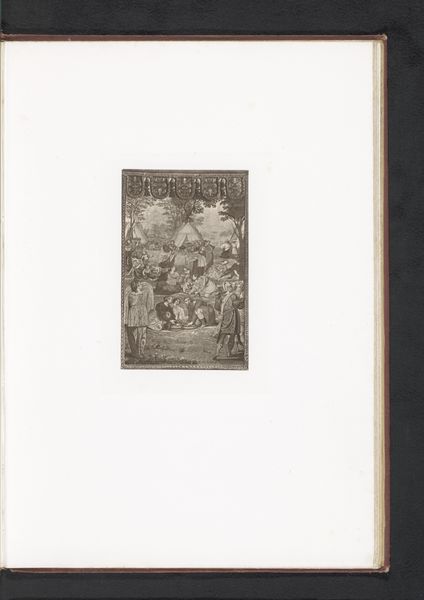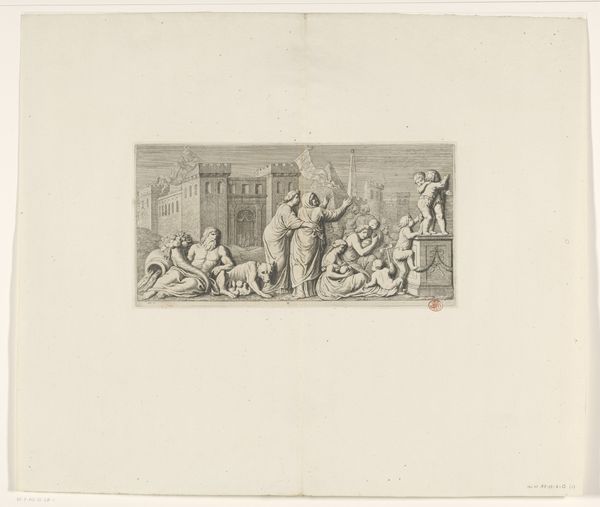
print, engraving
# print
#
figuration
#
11_renaissance
#
history-painting
#
engraving
Dimensions: 3 3/4 x 2 13/16 in. (9.53 x 7.14 cm) (image, sheet)11 15/16 x 9 13/16 in. (30.32 x 24.92 cm) (mount)18 1/16 x 14 1/16 in. (45.88 x 35.72 cm) (mat)
Copyright: Public Domain
Curator: Let's take a closer look at this engraving entitled "Print" made around the 16th century by Heinrich Aldegrever. It resides here at the Minneapolis Institute of Art. Editor: My first impression is one of constrained power. There’s a muscular figure straining under the weight of what seems to be a globe, and another partially draped one seems to offer... advice? It has a muted, almost melancholic tone to my eye. Curator: Right, the subdued emotionality stems from its being an engraving. This allows for tight control, demonstrating considerable mastery over the medium. Notice how the artist renders the shading and musculature with such precision. You can practically feel the weight. Editor: It brings up questions of labor, doesn't it? Who is this burdened figure and what is he carrying, really? I read this almost immediately in the context of today's discussions about gender, power and representation of the body. This image certainly puts these issues into sharp focus. Curator: Yes, but how does Aldegrever translate pre-existing visual vocabulary in printmaking and his use of linear strokes into a new, more emotive visual expression? Look at how his engraving is so efficient with the mark making and that’s very economical, yet full of symbolism and movement, even within such a static composition. Editor: True, and situating this piece historically, we need to also ask who would have seen this print in the 16th century? Who was it meant for? And how might their reading of it differed wildly from our own, coloured as we are by centuries of shifting perspectives? Curator: Indeed. It reveals to us the relationship between production and audience in this period; the work only gains relevance through these multiple and repeated layers of engagement over time, by which meaning gets altered according to social forces and access. Editor: It's a great demonstration of the continuing power of art, right? Both this dialogue and the ongoing relevance for discussing complex power dynamics across society is why studying art historical practice still holds such value. Curator: It allows one to reflect critically on process and labor.
Comments
No comments
Be the first to comment and join the conversation on the ultimate creative platform.
